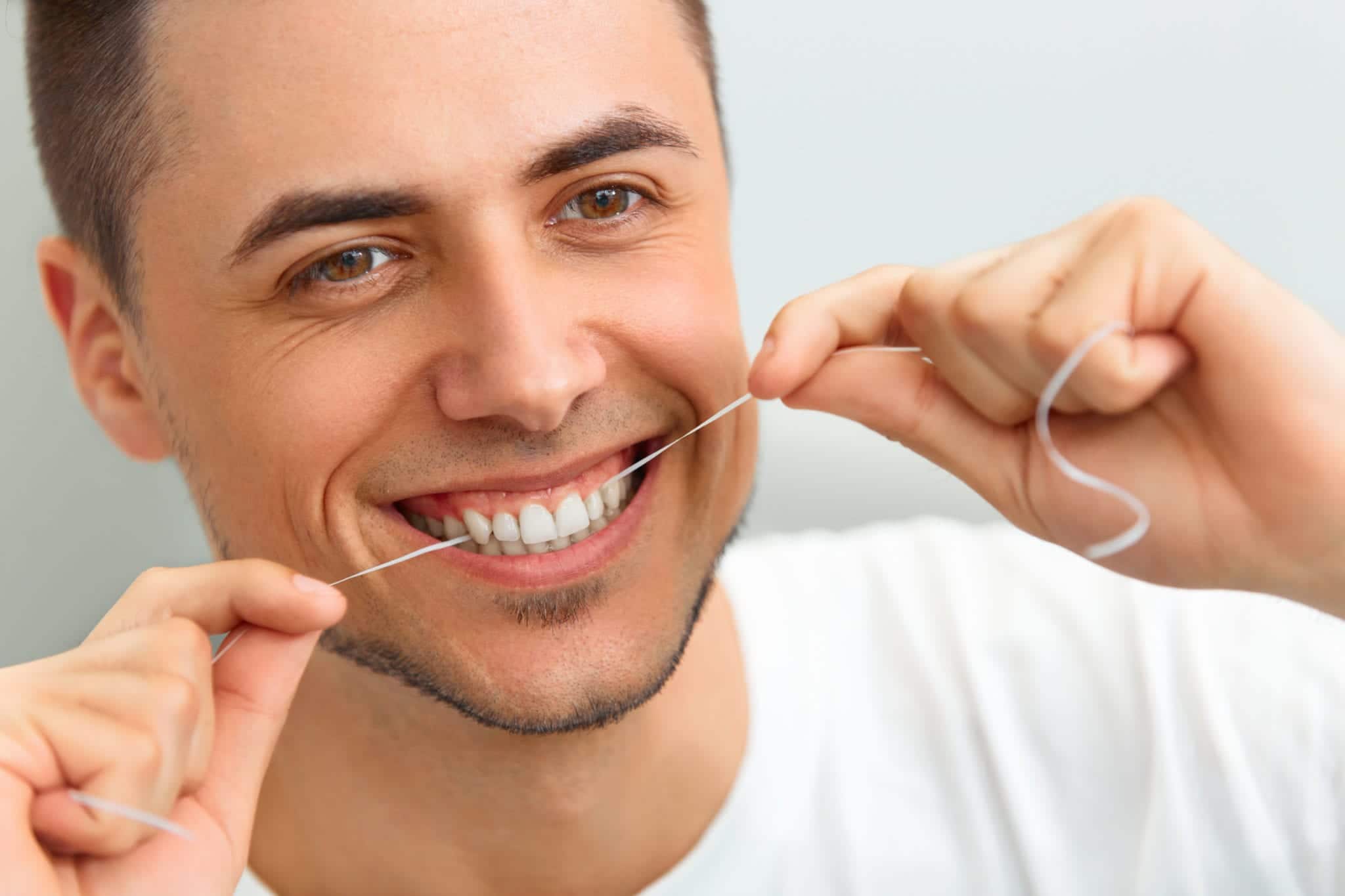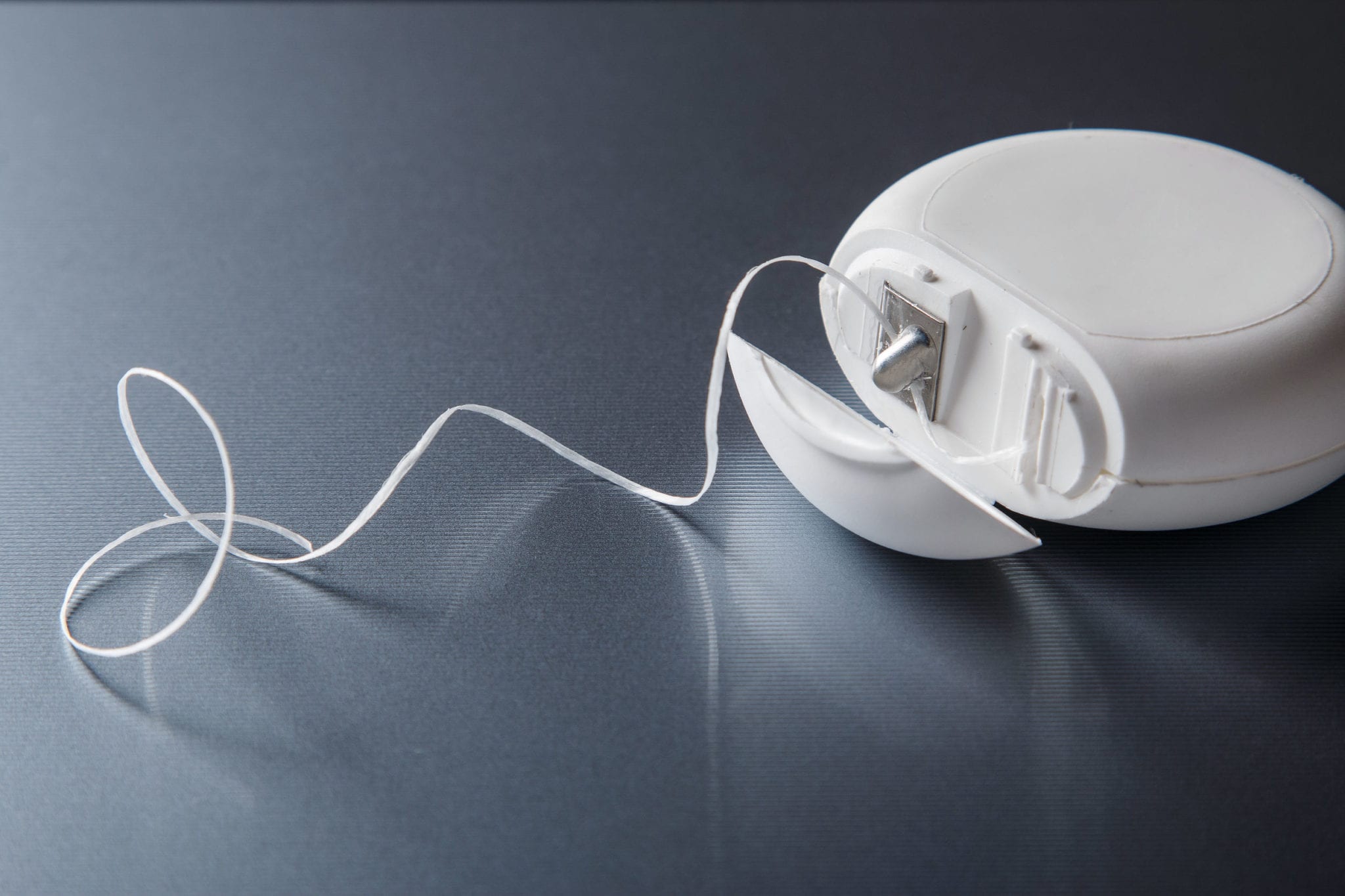
“Brush and floss” is the mantra of dentists the world over. You’re probably accustomed to hearing it every time you’re in the chair. You may even tune it out.
But — how much thought do you give to how you brush and floss? It turns out that there really is a right and a wrong way to do both of those things.
Below, we’re going to cover why flossing is so important, how you should go about flossing the right way, and common pitfalls to avoid.
The Importance of Flossing
If you’ve had cavities, you may have noticed that they tend to form not in the middle of your teeth, but between them.
That’s because cavity-causing bacteria tend to hang out in the spaces between your teeth.
These bacteria digest sugar and carbohydrates and secrete acid which erodes your teeth there, leading to cavity formation.
These hard-to-reach spaces simply aren’t always accessible with a toothbrush alone. If you only brush, you’ll leave lots of plaque and cavity-causing bacteria behind. Flossing is what clears food debris from these hard-to-reach places.
Flossing is also important for good gum health. Food and plaque can get trapped in pockets between your teeth and gums, too, promoting gum disease. These tight spots are also unreachable with a toothbrush.
Flossing in Five Simple Steps
Most people know they should floss at least once a day, but not everyone knows how. These simple steps will help you properly floss:
STEP 1. Break off about a foot and a half of floss. One rule of thumb — use the length of your arm from hand to elbow as a guide. This is usually enough. Wind about two-thirds of the floss around one middle or index finger. The rest winds around the same finger on your other hand. This finger will take up the floss as it becomes dirty.
STEP 2. Grasp the floss tightly between your thumbs and index fingers to keep a firm grip.
STEP 3: Gently guide the floss between your teeth using a rubbing motion. Avoid snapping the floss into your gums.
STEP 4: When the floss reaches your gum line, curve it into a “c” shape against your tooth. Carefully slide the floss into the space between the tooth and gum. Be sure to use gentle motions to avoid hurting your gums.
STEP 5: Holding the floss snugly against the tooth, gently rub it up and down the side of the tooth. As you move between teeth, switch sections of floss by winding and unwinding it from your fingers, such that each tooth gets a new segment of floss.
Repeat these steps for all of your teeth. Don’t forget to do this for the backside of your last tooth. It’s often-forgotten and is a good place for plaque to collect.
When you finish, rinse with water, and you can follow up by brushing — see our brushing guide.
You can brush before you floss if you prefer. There aren’t any good studies that say one way is better than the other. What matters most is that you floss at least once daily, and brush twice.

What Type of Floss to Use
This may seem like a simple question, but it’s one we hear a lot. There are two main types of floss on the market:
- Nylon floss, also known as multifilament floss
- Polytetrafluoroethylene (PFTE) floss, also known as single-filament floss
Nylon floss is available in waxed and unwaxed varieties and comes in many flavors. Because this floss is comprised of many tiny strands put together, it may tear or shred between teeth. If you experience this issue, check out “monofilament” floss.
Monofilament floss is more expensive, but slides more easily between teeth, especially the tighter spaces, and is easier to slip between the tooth and the gum. It’s also resistant to shredding.
There are some additional alternatives on the market worth checking out, particularly if you have difficulty manipulating monofilament floss.
What to Avoid When Flossing
There are also some common flossing practices that do more harm than good. This can either hurt your teeth or gums… or completely turn you off to flossing altogether.
The following “don’ts” are important:
- Don’t snap the gum as you move floss between your teeth. It can damage the tissue.
- Don’t be nervous if you see blood. It’s especially common when you’ve just added flossing to your routine. If the bleeding doesn’t clear up quickly, give your dentist a call.
- Don’t be afraid to ask for help flossing. If you’re not sure you’re doing it right, ask your dentist or dental hygienist at your next checkup.
- Don’t be stingy. It’s best that each tooth has a new section of floss.

You probably didn’t know there was so much information out there about floss! It only costs your routine an extra two or three minutes, but the practice is truly an essential component of good oral health care.
Be sure to floss at least once daily, and make sure that you’re using the right technique. If you have questions or concerns, talk to your South Florida dentist at your next checkup.






